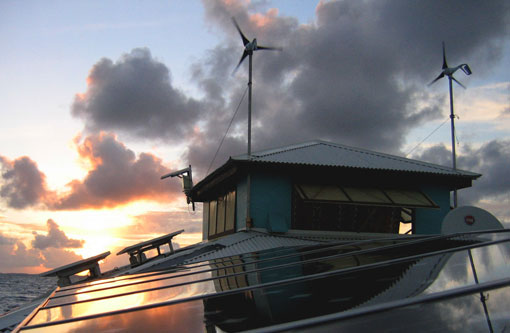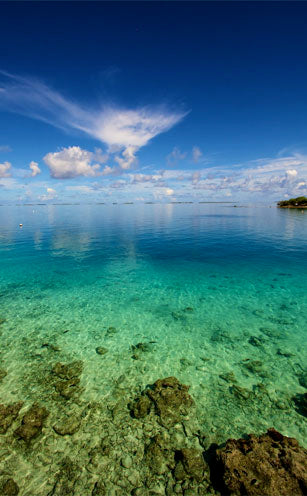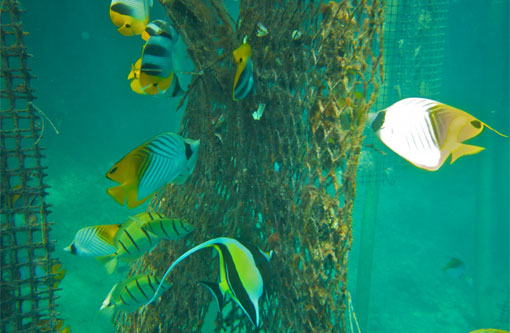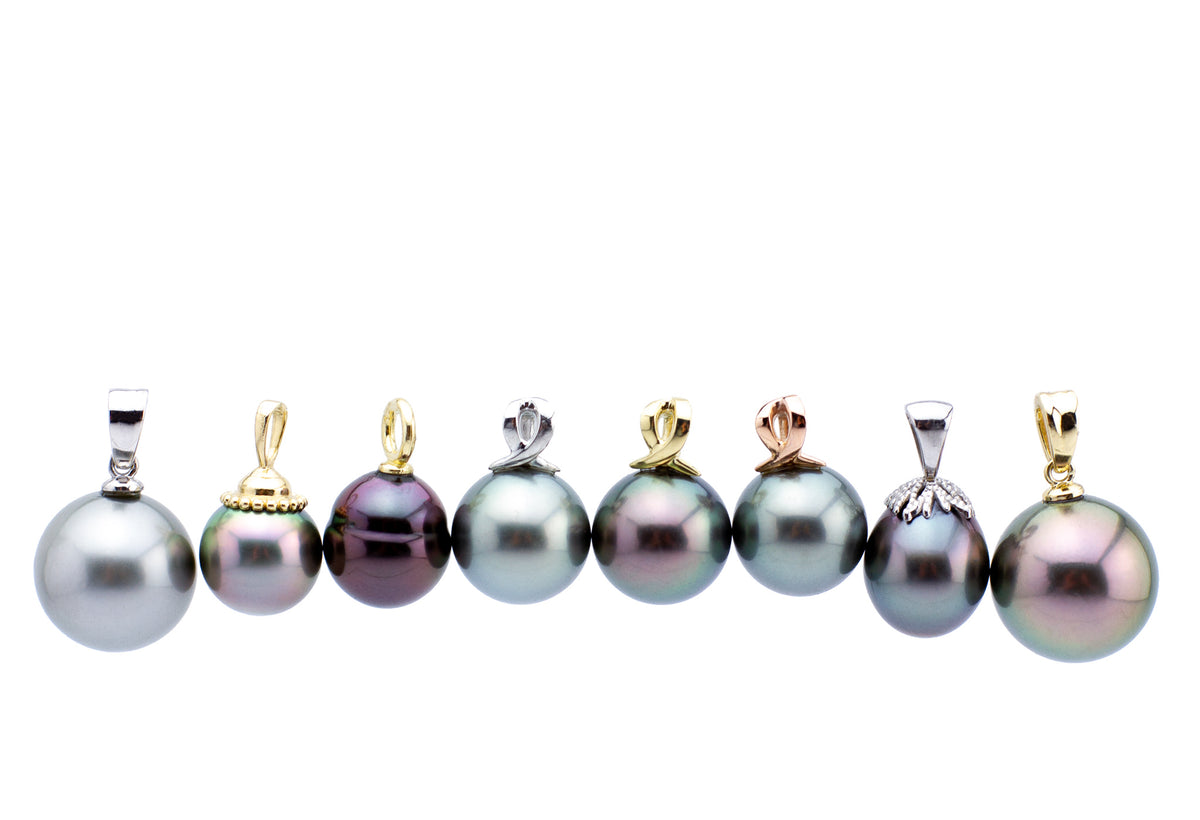Sustainability

Kamoka Pearl is built on a foundation of respect. It is our respect for our work that pushes us to produce pearls of the highest quality. It is our respect for the fragile ecosystem in which we live and work that compels us to use only the most environmentally sustainable methods of aquaculture. And it is the respect every member of our team has for our work and for each other that allows us to continue to excel at what we do.
Ecological responsibility
We strive to be good custodians of the lagoon, the sea, the island, and the many organisms that live here.
We are essentially farming wild animals in a wild environment, and our goal is to do it respectfully and sustainably. We work towards this both in the way we live and in the way we work.
• Our farming techniques have actually increased the fish population of our lagoon (see details of Dr Carpenter's National Geographic study below).
• All our electricity needs are met by solar and wind power.
• Our fresh water is supplied by rainwater catchment systems.
• Our septic systems are fully biodegradable.

Dr. Kent Carpenter, world renown expert of tropical fish conducted a study that proved what we’ve always known: our farming methods help replenish our lagoon's fish populations. His findings were published in an excellent article about Kamoka's sustainable farming practices on the National Geographic website.
On top of all this, virtually all our nuclei are made of mother of pearl (MOP), a natural byproduct of our very own Pinctada margaritifera oysters or their Pinctada maxima cousins. We were the first company in Polynesia to use MOP nuclei, and the Tahitian Pearl Farming Board (La Service de la Perliculture) found in independent tests that our nuclei produced three times more A grade pearls than any other nucleus type. Using MOP nuclei prevents the further over-exploitation of North American freshwater mussels which are the most commonly used nuclei in pearl farming.

Social Responsibility
The team members of Kamoka Pearl are like family. We live together, eat together and work together. Every member of the team has respect for each other, for their work and for our environment. Most pearl farms operate with a military hierarchy and a clear separation between management and employees. Workers are paid little and division between people occurs from job instability. This inevitably results in poor working relations, lower quality of work, thievery, and high employee turnover.
At Kamoka unity is paramount, team members are paid exceptionally well, and we suffer from virtually none of these problems. Our turnover is also notably low. Our oldest employee is our full time grafter Timiona Tehaai, who joined us in 1993.
Action
Kamoka's Key Note at the Sustainable Pearl Forum
In June 2014 our co-owner Josh Humbert was one of just over a dozen key note speakers at the first Sustainable Pearl Forum in Hong Kong. He was joined on the forum by representatives from other industry leaders including Mikimoto, Tiffany & Co and Paspaley. Josh was chosen because Kamoka has one of the strongest and longest history dedicated to eco pearl farming in the industry.
Putting Pressure on Pressure Hoses
Oysters are grown high above the floor of the lagoon in order to provide them with optimal access to oxygen and plankton. Myriad organisms take advantage of these suspended ropes near the surface and latch onto the oysters, harming their growth and severely affecting pearl quality. Typically, this obstacle is dealt with by periodically removing the oysters from the water and blasting them clean with high-pressure hoses. This practice results in numerous environmental problems. For example, the blasting breaks up caustic anemones, causing population explosions that the environment cannot assimilate. Many atolls in French Polynesia have suffered because of this. The anemones also degrade pearl quality and pose a hazard to divers.
When oysters grow naturally on the sea floor they are cleaned by the nibbling of fish. We rely on this free source of labor to clean our oysters; placing them in carefully selected zones where the right varieties of fish keep them clean to the benefit of all. This is just one example of the many ways Kamoka farms pearls in harmony with the environment.
In 1996 Patrick Humbert took the anemone issue brought on by the pressure hoses to the attention of the media and was featured on Tahitian television. In 2006 at the height of the problem, Josh had a petition signed by almost half the population of Ahe that banned the hoses once and for all.
Giving Back
Kamoka is a small company without a lot of capital but we give back what we can. First and foremost we are members of One Percent for the Planet that helps us give 1% of our sales revenue to ecological organizations that truly make a difference.
We make monthly donations to the NRDC (National Resources Defense Council).
In 2018 after Hurricane Maria destroyed much of the Caribbean, Kamoka donated half of our sales for that period to Waves For Water, a grassroots organization that helped those affected regain access to drinking water. Whenever possible we work with individual artisans and small communities to source our non-pearl materials.

